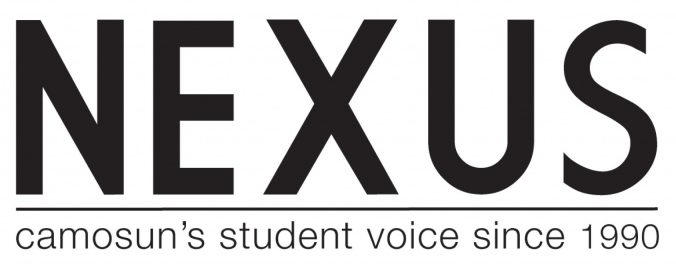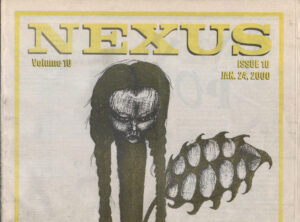Adbusters: If the year 2000 was known for any such thing in hindsight, it perhaps could be the outlandish insulting media proudly displayed in advertising. Crass remarks, vulgarity, shock. In our January 24, 2000 issue, Nexus spoke to students concerned over the recent advertisement posters displayed around campus. Zoom Media, a contracted advertisement agency, began discussion on Camosun campuses of whether it was appropriate to include the clad, sweaty chest of a woman to sell contact solution, observable behind the stall doors of the men’s washrooms. While president of Zoom Media Michel Tramblay figured the image was acceptable for the college audience, the discussion concluded with no, it is not appropriate, and was removed.
Kamosun kriminal: If I wasn’t mistaken, it would appear that the Camosun student body was made up of serial criminals ransacking campuses at all hours of the day. This issue included the common appearance of Krime Kount, a column dedicated to the petty theft, vandalism, and general lawlessness often appearing on campuses. “Jan. 6,” the column goes on to say, “an office burglary in CBA 114 of Interurban campus led to theft of a wallet.” The suspect, as of the article’s publishing, was yet to be found. Students are encouraged to keep their eyes peeled for a 5’10” white male.
Art 101: Depending on who you talk to, whether one can consider graffiti art may spark a variety of responses. In this issue, Nexus writer Lisa Hamilton spoke with graffiti artists Morgan Taylor and Hanz Fear on their justifications for the ruthless crime. Graffiti is an artistic and social movement, they say. Taylor denies the law, saying that buildings such as banks are just as offensive on the eyes. While I agree that graffiti is an important and artful expression of the self, I must defend that RBC brings an undeniable charm to its neighbourhoods.

